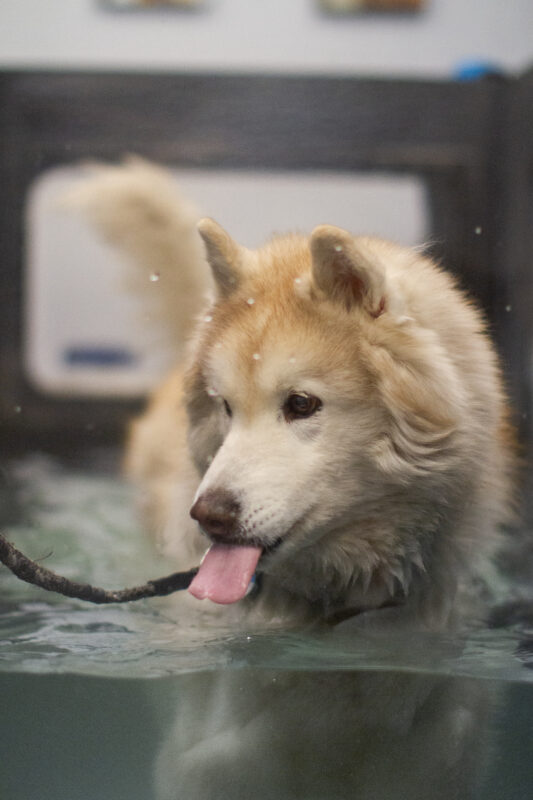If you’ve researched canine physical rehabilitation or a friend has shared their dog’s journey. Hydrotherapy is likely one of the first treatments you’ve heard about. And for good reason! Watching a dog walk on a treadmill submerged in water is not only fascinating, but it also provides incredible therapeutic benefits.
Hydrotherapy helps strengthen weakened muscles, improves range of motion, reduces pain by easing pressure on the joints, and gives dogs with neurological challenges the ability to walk without battling gravity. The list of benefits goes on and on.
But here’s the myth: hydrotherapy is not the only effective tool for canine rehabilitation.
At Stride, hydrotherapy is just one of many treatments we use to help dogs feel and move better. If your pup isn’t a fan of water or you’d rather avoid that unmistakable wet dog smell, you’ll be glad to know there are many equally effective land-based alternatives.
When Hydrotherapy Isn’t the Best Fit
While impressive, hydrotherapy isn’t always appropriate. Certain conditions, like uncontrolled seizure activity, skin wounds or infections, or chronic urinary tract infections, make it unsafe. That’s where the beauty of a comprehensive rehabilitation program comes in.
Stride offers a variety of therapies tailored to each dog’s needs, ensuring your pup gets the best possible path toward healing.
Beyond Hydrotherapy: Other Effective Rehabilitation Treatments
Therapeutic Exercise
Not only is it effective, but it’s fun! Most of our Stride patients would happily spend their entire session in our therapeutic exercise room. From balance work to coordination drills, posture training to strength-building, these tailored exercises enhance overall mobility while keeping dogs engaged and motivated.
Manual Therapy
Hands-on techniques like massage, myofascial release, and passive range of motion help reduce pain, improve flexibility, and keep joints healthy. Manual therapy also prevents compensatory pain from spiraling into bigger issues, making it a vital part of many treatment plans.
Pain-Relieving Modalities
When pain is the main barrier to movement, modalities such as laser therapy, shockwave therapy, PEMF therapy, and acupuncture provide relief. By easing discomfort, dogs can exercise more comfortably, which in turn builds strength and mobility.
Muscle-Building Support
Neuromuscular electrical stimulation (NMES) uses electrodes on the skin to activate and strengthen weak or “sleepy” muscles. It’s an excellent tool for rehabilitation and can even be used at home. Nutritional supplements like Myos Vet can also aid muscle development through targeted nutritional support.
Home Exercise Plans
One of the most essential elements of success is your involvement. Stride’s team will create a customized home exercise program so you can help your dog stay on track between sessions. Consistency at home amplifies the benefits of in-clinic treatments.
The Bottom Line
Hydrotherapy will always hold a valuable place in canine rehabilitation, but it’s not the only way forward. In fact, for some dogs, land-based therapies, manual treatments, or pain-relieving modalities may be more beneficial.
At Stride, we design rehabilitation programs that meet the individual needs of each dog and their family. The best path forward is the one that works for your dog, whether or not hydrotherapy is part of it.

